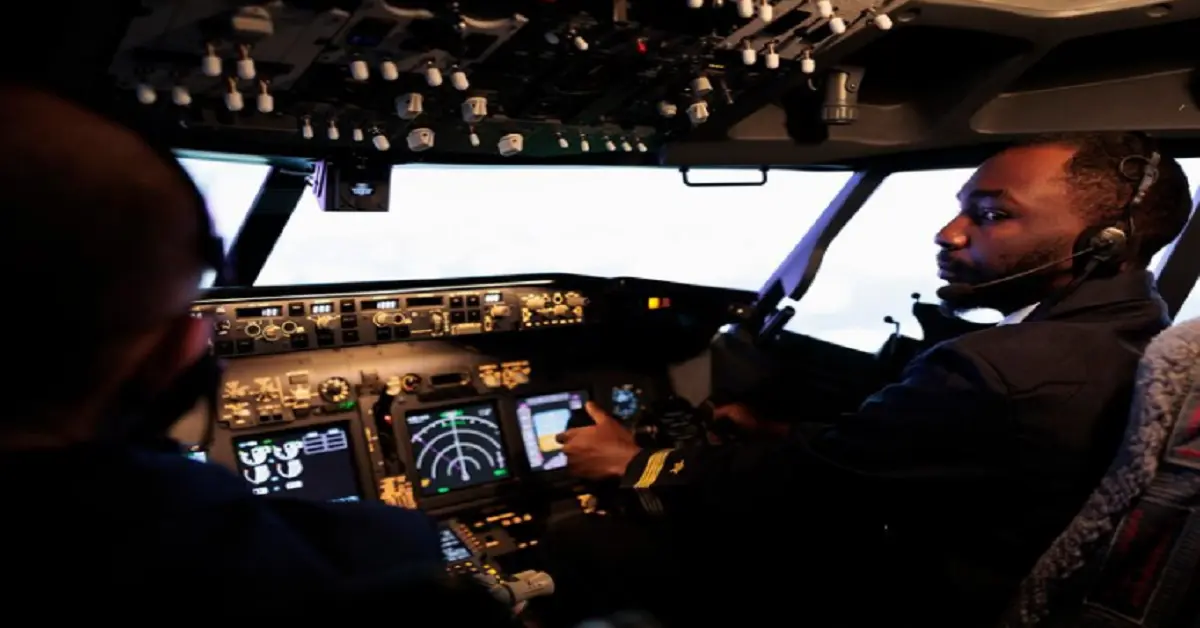Lighting is very important for keeping planes safe. It helps both the people flying the plane and those riding in it. Good lights let pilots do their jobs well, and they also make the passengers feel calm and safe. This blog post talks about all kinds of light on a plane. It looks at lights inside the cockpit where the pilot sits, lights in the cabin for people riding in it, emergency lights, and outer lights, which help keep everyone safe.
Cockpit Lighting and Pilot Performance
A well-lit cockpit is essential to a pilot’s performance. Sufficient lighting is essential for unobstructed visibility of controls and instruments, which promotes precision and focus while performing flight operations. Pilot tiredness and mistake rates can both rise in poorly lit environments.
While too little light might make it challenging to read instruments, particularly during night flights, too much light can also create glare and eye strain. These variables are balanced by optimal cockpit lighting, giving pilots a clear and comfortable working environment. Pilots can alter the brightness levels to suit their needs and the lighting circumstances by implementing adjustable lighting systems.
Cabin Lighting and Passenger Well-Being
The illumination greatly influences the comfort and well-being of passengers in the cabin. The whole travel experience is improved by proper illumination, which also has an impact on mood, relaxation, and sleep. Make sure the lighting in the cabin can be adjusted for the various stages of the journey, such as brighter lights for boarding and dimmer lights for sleeping. This lessens jet lag and aids in passengers’ time zone adjustment.
Warm, ambient lighting can produce a soothing and cozy environment, adding to the cabin’s appeal. Lighting can also be utilized to draw attention to safety measures and direct passengers in the event of an emergency. Effective cabin lighting improves passenger happiness and makes for a safer, more enjoyable flight experience.
Emergency Lighting Systems
For the protection of passengers during evacuations and other emergency circumstances, emergency lighting systems are essential. These lights aid passengers in swiftly and safely navigating the aircraft by pointing them in the direction of exits. It is important to note that emergency lighting consists of overhead lights, exit signs, and floor path lighting that will continue to work in the event that the main power supply fails. Routine testing and maintenance are necessary to maintain these systems in operational condition. You can improve the aircraft’s safety precautions and make sure that passengers can evacuate quickly and effectively in an emergency by installing strong emergency lighting.
Runway and Taxiway Lighting
Lighting for runways and taxiways is necessary for safe aircraft operations during landings and takeoffs. In low visibility situations like night or fog, proper illumination greatly aids pilots in navigating the layout of the airport. In order to help pilots during takeoff and landing, you need to make sure that your runway lighting system has edge lights, centerline lights, and touchdown zone lights.
The taxiway’s illumination, consisting of centerline and edge lights, helps pilots maneuver their aircraft safely on the ground. These lighting systems adhere to international standards and are made to be easily distinguished. Safe and effective ground operations at airports are ensured by effective runway and taxiway lighting, which lowers the chance of accidents.
External Aircraft Lighting
In order to avoid collisions and maintain visibility, external aircraft lights are essential. By making your plane more visible to other pilots and ground crew, these lights help to avoid collisions. There are several kinds of external lights, like landing lights, anti-collision lights, navigation lights, and wingtip lights.
Anti-collision lights increase the aircraft’s visibility during flight, while navigation lights show the position and direction of the aircraft. Wingtip lights improve visibility, and landing lights light the runway during takeoff and landing. Proper maintenance and compliance with regulations guarantee the proper operation of these lights.
Conclusion
Lightning plays a critical role in aviation safety for both pilots and passengers alike. Every element makes a substantial contribution to a safe flying experience, from improving pilot performance with ideal lighting in the cockpit to guaranteeing passenger safety with efficient lighting in the cabin. The aviation sector can guarantee safer, more effective operations, which will eventually protect every passenger on board, by placing a high priority on adequate lightning.
Read More: TTXRH Live
